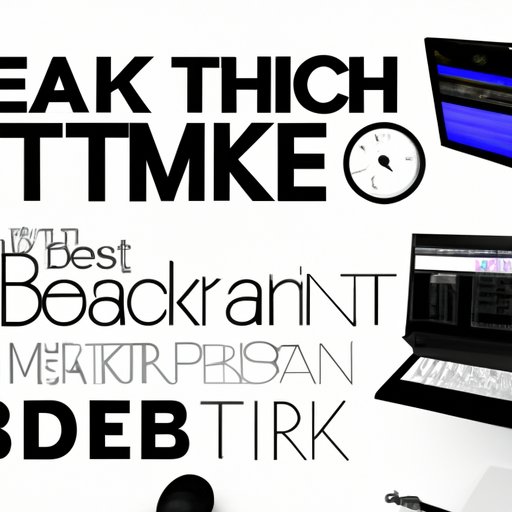
Introduction
As a music lover and creator, there’s nothing quite like making your own beats. Whether you want to produce your own music, collaborate with other artists, or just enjoy the creative process, beat-making is a crucial skill to have in your arsenal. In this article, we’re going to explore the different steps involved in making a beat, including selecting the right software, choosing the tempo, composing the melody, and adding layers and effects. We’ll also share tips and tricks, genre-specific advice, interviews with professional beat makers, and video tutorials to help you get started.
Step-by-Step Guide
The first step in making a beat is selecting the right software. Some popular options include FL Studio, Ableton Live, and Logic Pro. Once you’ve chosen your software, it’s important to select the right tempo. This will depend on the genre you’re working in, but as a general rule, it helps to start with a slower tempo and gradually work your way up.
Next, create a basic drum pattern and start composing the melody. This is the foundation of your beat, so take your time and experiment with different sounds, loops, and instruments. Once you have the basic rhythm and melody down, start adding layers and effects to create more depth and texture to your beat. This can include anything from a bassline to atmospheric pads, synths, or vocal samples.
After you’re satisfied with the sound of your beat, arrange the different elements of your beat to create a cohesive track. This means structuring the beat, creating sections like verse, chorus, and bridge, and adding fills and transitions to make it flow smoothly.
Finally, export the beat and save it in the format of your choice. It’s always a good idea to create different versions of the same beat, such as a radio edit and extended mix, and to work on different drafts until you’re satisfied with the final product.
Tips and Tricks
To make your beats stand out from the crowd, it’s important to incorporate various tips and tricks along the way. Here are some suggestions:
– Experiment with different tempos until you find the right groove for your beat.
– Loop samples to create a more dynamic track.
– Layer different sounds to create depth and texture.
– Use compression, EQ, and other effects to bring out the best in your beats.
– Play around with different melodies, harmonies, and chord progressions to create a unique sound.
Genre-Specific Guide
Making beats for different genres requires different approaches and techniques. Here are some tips for different genres:
Hip-Hop
For hip-hop beats, start with a slower tempo and a simple drum pattern. Then, add a bassline, chords, and melody. Experiment with different samples, including vocal chops, vinyl crackles, and drum breaks. Remember to keep it simple and add variations throughout the track.
EDM
For EDM beats, start with a faster tempo and a four-on-the-floor drum pattern. Then, add a catchy melody, powerful synths, and a drop that will get people jumping. Experiment with different effects like reverbs, delays, and filters. Remember that the energy of an EDM track comes from its layers, so don’t be afraid to add as many elements as you want.
Pop
For pop beats, focus on creating a catchy hook that people can sing along to. Start with a simple chord progression, add a melody, and then add a bassline and drums. Experiment with different instruments like pianos, guitars, and synths. Remember that the key to a great pop beat is to make it catchy and easy to remember.
Interview with a Pro
To get an insider’s perspective on the beat-making process, we interviewed a professional beat maker. Here are their top tips and recommendations:
– Always start with the drums. Get the rhythm and groove down before adding anything else.
– Focus on arrangement and structure. A great beat needs to have a good flow and progression.
– Experiment with different sounds and samples until you find the right combination.
– Collaborate with other artists and producers to get fresh perspectives and ideas.
– Don’t be afraid to make mistakes. Some of the best beats come from happy accidents.
Video Tutorial
To complement the step-by-step guide, here’s a link to a video tutorial on how to make a beat:
(Insert link here)
Watching a video tutorial can help you see the process in action and get a better sense of how everything comes together. Pay attention to how the producer selects sounds, creates patterns, and uses effects to make the beat sound more professional.
Conclusion
Making a beat is a fun and rewarding process that allows you to express your creativity and make something that you can be proud of. We’ve covered the different steps involved in making a beat, from selecting the right software to adding layers and effects. We’ve also shared tips and tricks, genre-specific advice, interviews with professional beat makers, and a video tutorial to help you get started. Remember to experiment, have fun, and keep pushing yourself to create better beats.




